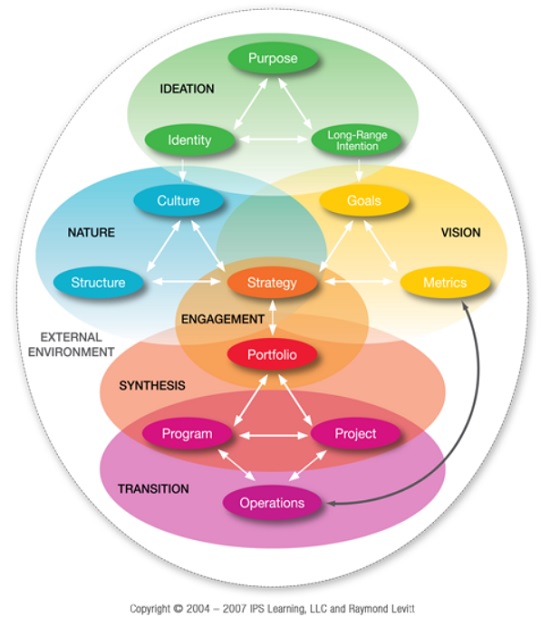Strategic execution and why you need to invest in INVEST
By Jon Hughes September 17, 2015
- Effective strategic execution is a critical differentiator for competitive advantage
- SEF provides holistic view of the complex inter-relationships of 6 key capabilities
 BUSINESSES today face the twin challenges of increasingly commoditised business strategies and compressed cycle times to define and successfully implement action.
BUSINESSES today face the twin challenges of increasingly commoditised business strategies and compressed cycle times to define and successfully implement action.
As a result, effective strategic execution is progressively emerging as a critical differentiator and a source of competitive advantage.
According to an April 2014 survey by PwC, 55% of executives are concerned that their company is not adequately focused on execution of the strategy.
Effective strategic execution demands strong programme execution capability, which is in turn dependent upon project execution success.
When businesses struggle at the lowest of these three layers (the project level), it is time to reconsider starting any strategic execution initiatives as the risk of failure is so high without this basic capability.
The most successful businesses over the next decade will be those that can execute strategy better than their competitors by maintaining alignment with strategic priorities and understanding what level of execution is possible within the constraints of their unique ecosystem.
Invest in INVEST
To address the strategic execution challenge, many organisations are adopting a Strategic Execution Framework (SEF) model – developed jointly by project management training and solutions provider IPS Learning and the Stanford Centre for Professional Development – that provides a holistic view of the complex inter-relationships of six key capabilities (known collectively as INVEST).
When these capabilities align and work well together, they function as one to deliver strategy effectively and create competitive advantage.
Organisations need to align strategy creation (thinking) with strategic execution (doing) by considering six important capabilities:
- Ideation: What is the fundamental rationale for the business, described in terms of purpose, identity and long-range intention?
- Nature: What are the unique characteristics of the organization in terms of culture and structure?
- Vision: What are the key measures for the business in terms of goals and metrics?
- Engagement: What is the strategy in terms of a portfolio of business initiatives to translate the vision into reality?
- Synthesis: How is the portfolio structured in terms of programmes that, in turn, comprise projects?
- Transition: How can we transition ‘change the business’ projects into ‘run the business’ operations?

Advancing strategic delivery
So how can an organisation use SEF to increase the success rate of the strategic execution?
Assessment of how strong a business is in each of the INVEST capabilities can be administered through an online self-assessment or through interviews and workshops.
Once the initial diagnosis is concluded, the INVEST capabilities and more importantly, the critical linkages between them, can be assessed in more detail. This identifies pragmatic improvement efforts that enable the system to function as a whole and areas of risk that may require reassessment of the strategic priorities of the enterprise.
A critical element is to align a balanced portfolio with clear business objectives, which then focuses on driving successful project delivery.
Many large organisations are often faced with this challenge. Progressive businesses are starting to use the SEF to identify longer-term capability improvements to ensure effective delivery of future execution programs.
Operationalising SEF thinking
There are 10 critical success factors to help organisations effective delivery of their strategy:
2) Develop programmes to up-skill core capabilities before addressing complex changes.
3) Develop partnerships to provide noncore capabilities where rapid progress is needed.
4) Define a balanced scorecard of goals and measures comprising both leading and lagging metrics that are focused on business outcomes.
5) Ensure alignment at the highest level before initiating major change and continuously focus on cascading this alignment throughout the organisation.
6) Take sponsorship of key initiatives seriously, with an understanding of the elements required and assurance that the right combination of leaders is engaged.
7) Spend more time, money and effort than anticipated to build momentum so as to overcome organisational inertia through extensive planning, alignment and rapid-start mobilisation activities.
8) Think integration of initiatives to support opportunities in identifying duplication, white space and acceleration.
9) Drive toward parallel realignment of processes, systems, people and organisation through aligned principles and goals.
10) Understand that changing the hearts and minds of staff to overcome inertia is the hardest element and always requires more time and effort than planned.
Break it down and get it done

While SEF is not a panacea for all of these highly complex issues, it does provide a great starting point for a holistic view of key obstacles that hinder effective strategic execution.
The SEF defines six core INVEST capabilities and emphasises the critical linkages and connections within a business that collectively both define and constrain an organisation.
With the emphasis on maximising alignment across all the different elements of the SEF, an organisation can understand where disconnects or disparities exist, when embarking on a transformational journey.
Businesses that see strategic execution capability as a corporate asset are already starting to distance themselves from competitors. Today, these organisations are successfully delivering multibillion-dollar benefits through highly complex initiatives, such as post-merger integration or transformation – sometimes simultaneously.
In the next decade, we expect to see these organisations will increase their competitive advantage as their strategic execution capability continues to mature.
Jon Hughes is vice president of programme management consulting at Cognizant.
Related Stories:
The 6 laws of digital transformation, according to SingPost
Market myopia: Blame the SWOT analysis
Enterprise Architecture key to driving digital strategy: Gartner
CA releases playbook for strategic planning
For more technology news and the latest updates, follow us on Twitter, LinkedIn or Like us on Facebook.


